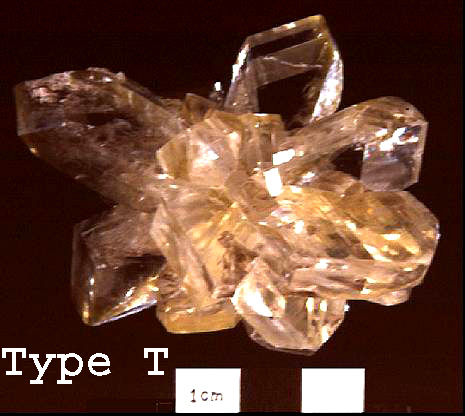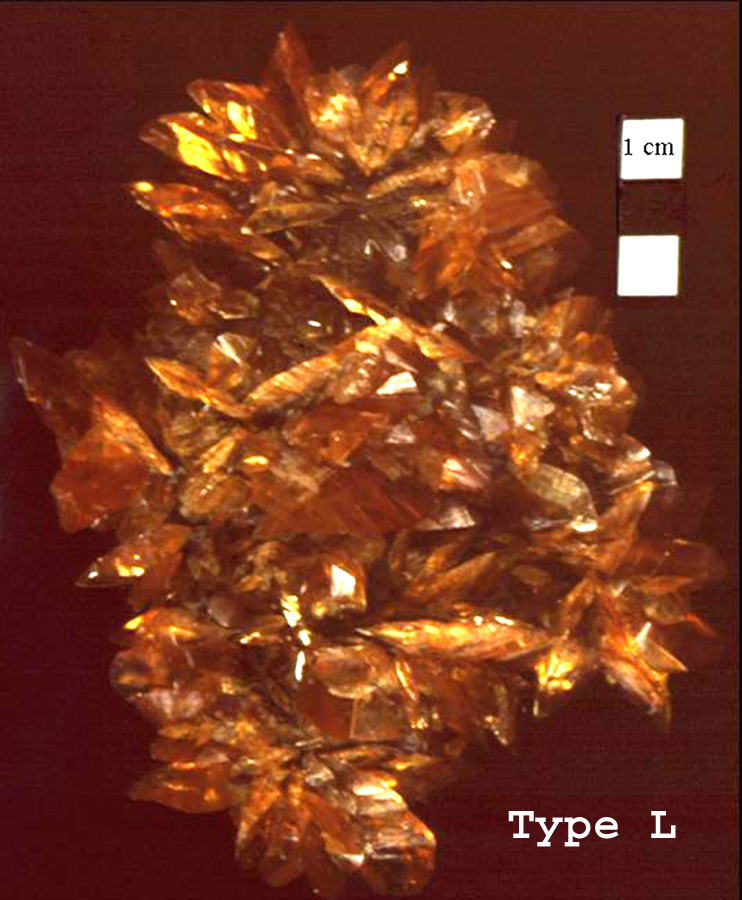





In this study, three types of gypsum
rosettes have been recognized on the basis of habit and spatial arrangement
of the crystals. Type T rosettes are characterized by colourless
to pale-yellow, tabular crystals. These rosettes occur in Agassiz
Unit 1&2 and have only been observed to date at the Red River floodway
site where there have been deep excavations for “ore-grade” rosettes.
They are most abundant at ~1-2 m below the contact between Agassiz Unit
1&2 and Unit 3 but they have been collected from depths up to 10 m.
Type L rosettes are characterized by amber to pale-yellow lenticular crystals.
These rosettes have been observed at all sites studied to date (Birds Hill,
Red River floodway and Letellier), occurring
in fractures near the contact between Agassiz Unit 1&2 and Unit 3.
Type B rosettes are solitary or aggregate balls of finer crystalline, amber
to pale-yellow lenticular crystals. They occur in the upper part
of Agassiz Unit 1&2 and in Agassiz Unit 3 at all study sites.
Stratigraphy
The Lake Agassiz clays that cover parts of southern Manitoba have been subdivided into three units: Agassiz Units 1 and 2, unconformably overlain by Agassiz Unit 3. Units 1 and 2 cannot be differentiated at the investigation sites, so the two units will be treated as one and referred to as Agassiz Unit 1&2. Agassiz Unit 1&2 is characterized by dark grey and brown, massive clay. Silt and clay thin-beds are observed locally and show soft-sediment deformation. Sub-vertical fractures crosscut Agassiz Unit 1&2. The overlying Agassiz Unit 3 is characterized by grey to brown, thinly interbedded and interlaminated silt and clay, showing planar and ripple-cross lamination.
